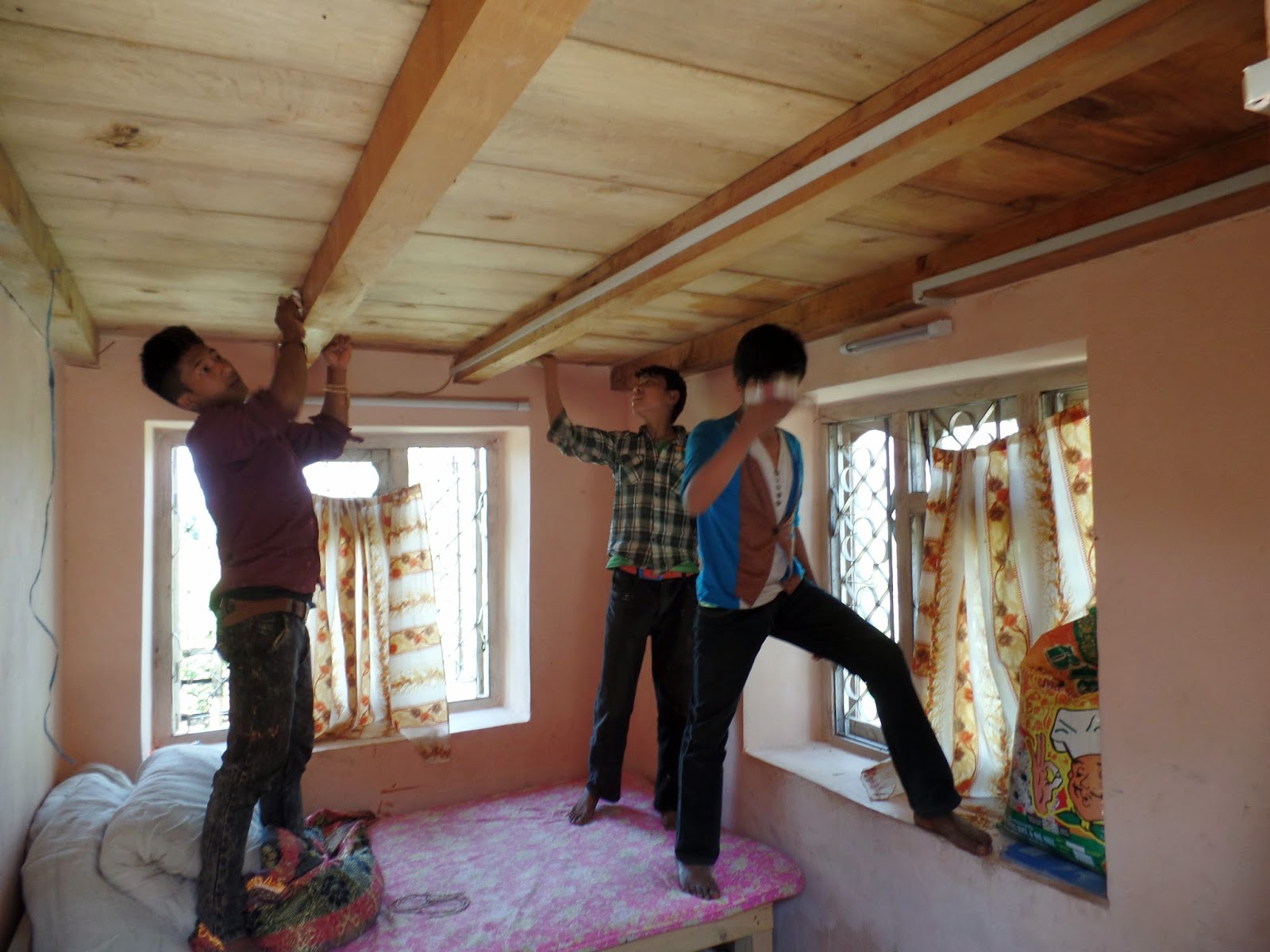Being cut off somewhat by the monsoon rains and damage to the highways and local road has hampered my immediate return to Mirge and as such has delayed further training. However, the group of teachers, who started learning about the use of THRASS to explicitly teach phonetic spelling, reading and pronunciation of the English phonemes in 2014, came together after the summer break to develop skills with the leadership and direction of Phulkaji.
Five teachers attended the first of this session's monthly meetings. Since our last training in April, I had identified that the teachers would benefit from learning the International Phonetic Alphabet, so they could use a dictionary to work out how to pronounce new words. Phulkaji used this meeting of teachers to guide their individual learning and he reported to me the following:
In his own words;
1) they recognized 44 IPA symbols individually including 20 vowels and 24 consonants.
2) they did listening activities(dictation) with the support of my mobile and they were able to write English vocabulary after listening to the native speaker.
3) they did phonemic writing too with the help of THRASS chart and IPA chart. For example, the word "cow" was in phonemic writing / kau/.
4) we watched [looked at] and practiced the material you sent me through messenger.
Then the class was over at 3:30pm.
The other challenges ahead lay in using the teaching materials in the Temporary Learning Centers. The charts need to be displayed so they can be used to explicitly teach the charts themselves and spelling new words. They have concerns about theft or damage to the charts as there is no security in a TLC, but I am anticipating that a solution will be found. We have had a few set backs in completely instigating the program and the impact of the earthquake could not have come at a worse time - just when we were making headway with the teachers' skills and confidence.
I hope the access will soon be more reliable and I can venture out to Mirge and try to pick up the pieces and ensure the implementation of THRASS is kept on track and schedule. I am aiming that by the end of 2016 that the schools will be independent and self perpetuating in THRASS.
I am sorry that there are no photos with this report because for some strange reason using Blogsite on this PC and in Nepal won't let me insert. Anyway you can check out the photos in Facebook.
Five teachers attended the first of this session's monthly meetings. Since our last training in April, I had identified that the teachers would benefit from learning the International Phonetic Alphabet, so they could use a dictionary to work out how to pronounce new words. Phulkaji used this meeting of teachers to guide their individual learning and he reported to me the following:
In his own words;
1) they recognized 44 IPA symbols individually including 20 vowels and 24 consonants.
2) they did listening activities(dictation) with the support of my mobile and they were able to write English vocabulary after listening to the native speaker.
3) they did phonemic writing too with the help of THRASS chart and IPA chart. For example, the word "cow" was in phonemic writing / kau/.
4) we watched [looked at] and practiced the material you sent me through messenger.
Then the class was over at 3:30pm.
The other challenges ahead lay in using the teaching materials in the Temporary Learning Centers. The charts need to be displayed so they can be used to explicitly teach the charts themselves and spelling new words. They have concerns about theft or damage to the charts as there is no security in a TLC, but I am anticipating that a solution will be found. We have had a few set backs in completely instigating the program and the impact of the earthquake could not have come at a worse time - just when we were making headway with the teachers' skills and confidence.
I hope the access will soon be more reliable and I can venture out to Mirge and try to pick up the pieces and ensure the implementation of THRASS is kept on track and schedule. I am aiming that by the end of 2016 that the schools will be independent and self perpetuating in THRASS.
I am sorry that there are no photos with this report because for some strange reason using Blogsite on this PC and in Nepal won't let me insert. Anyway you can check out the photos in Facebook.





















